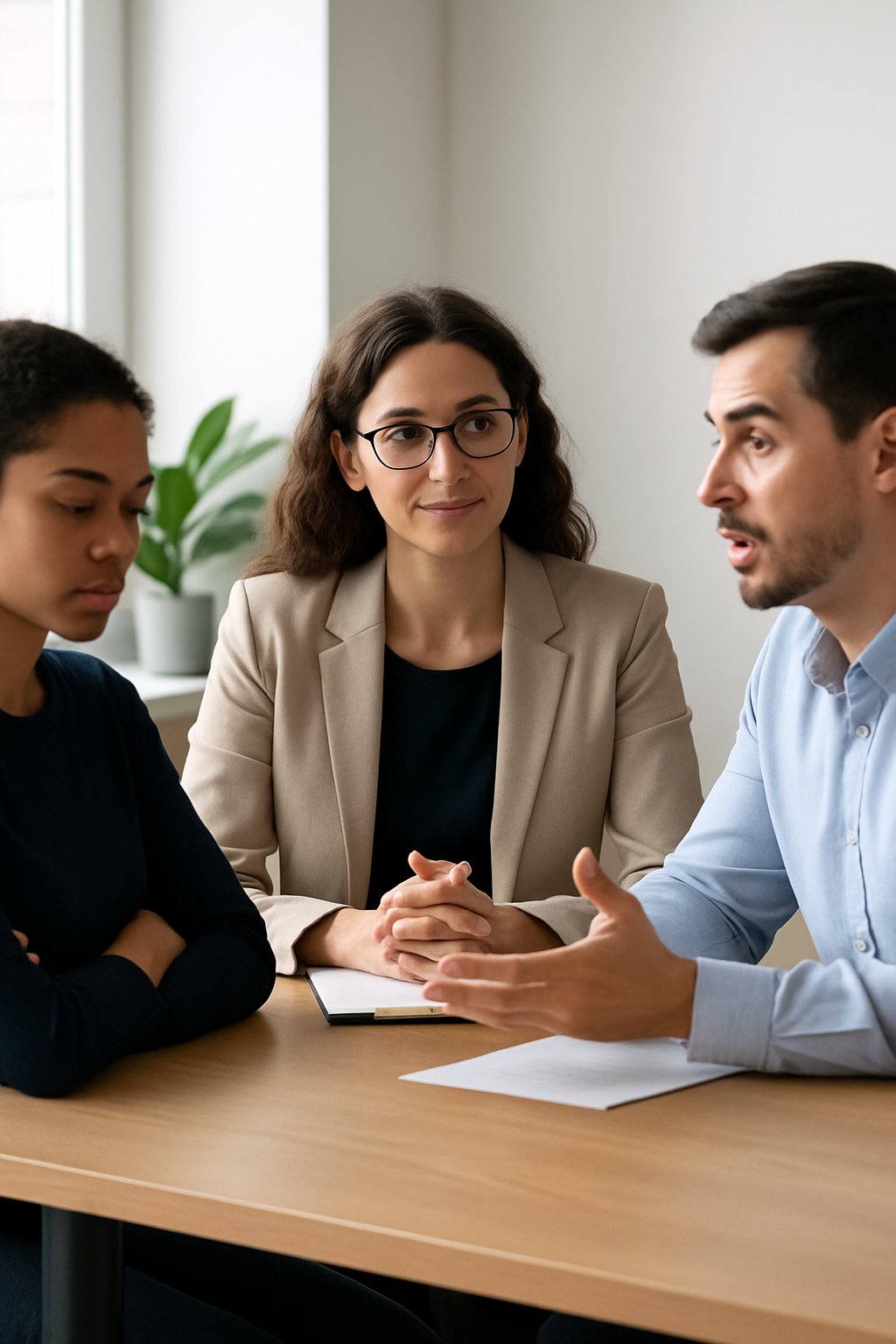In-person mediation: how it works and why it matters

Most mediations in the Netherlands still take place the classical way – in person. Whether the conflict is personal or professional, sitting together at one table can be a powerful step towards resolution.
In this article, we explain how in-person mediation typically works, why it takes time, and what makes the face-to-face format so valuable – especially when dealing with sensitive issues.
What does in-person mediation look like?
Mediation is not a one-off event. It usually takes place over several meetings, often spread out across weeks or even months. Each session typically lasts 1.5 to 2 hours – long enough to explore important topics, but not so long that the conversation becomes too emotionally draining.
This format is designed to support people in dealing with conflict at a sustainable pace. Talking about difficult matters – such as a divorce, a business dispute or a family disagreement – takes focus and energy. A limited session length helps people stay engaged and clear-headed.
Time between sessions is not wasted
Between sessions, there’s usually a gap of at least one or two weeks. This gives each party time to reflect, process emotions and consider what was said. It also gives space to explore options or gather information.
For example, if a couple is separating and unsure who can stay in the home, they may need to consult a mortgage advisor, request official documents or speak with a housing expert before the next step becomes clear. That kind of practical follow-up takes time – and is a normal part of the process.
Sometimes, mediators give ‘homework’ at the end of a session. This might be a shared agreement (“you’ll both talk to your financial advisor”) or a personal note (“think about what arrangement would feel fair to you”). Even when it’s not formalised, people often leave a session with something to reflect on or explore.
The value of being in the same room
Mediation is not just about what is said. Body language, facial expressions, tone of voice and posture all contribute to communication – especially when emotions run high. In-person meetings allow the mediator to observe the full picture, including non-verbal signals that may go unnoticed online.
This helps the mediator respond with sensitivity, support emotional regulation, and guide the process with greater awareness. Participants also tend to feel more connected when they share the same physical space. Even when conflict is present, it can be healing to sit across from each other and work towards a solution together.
Being physically present can also help with focus. There are fewer digital distractions, and it’s easier to maintain a shared rhythm and flow. Small rituals – like offering coffee or setting up the meeting space – may seem minor, but they can create a sense of calm, structure and respect.
In-person vs online mediation
In-person mediation offers depth and presence that can be hard to replicate in a virtual setting. That said, both formats have their strengths. Online mediation (as explained in our separate article) can offer more flexibility, especially when parties live far apart or need to save time and costs.
Ultimately, the best format depends on your specific situation, needs and preferences. In complex, emotional or highly personal disputes, many people still prefer the human connection of meeting face to face.
Conclusion
In-person mediation remains an important method for resolving conflict – offering structure, presence and emotional connection that can be difficult to replicate online. With time between sessions to reflect and prepare, and the full range of non-verbal communication available, it provides a calm and constructive setting to move forward.
Whether you’re facing a personal issue or a professional dispute, mediation in person allows space for real dialogue – with the goal of reaching a solution that works for everyone involved.
Disclaimer: The information provided on this website is for general informational purposes only and is not legally binding. Although we strive for accuracy, the content may contain errors. If you notice any mistakes, please let us know by contacting us via the contact form located at the bottom of the page.
Picture : Created by Sora/ ChatGPT

